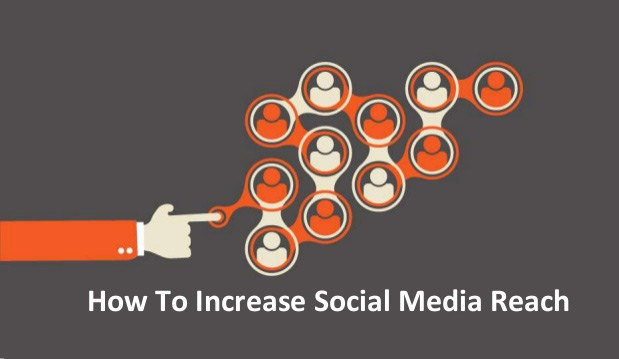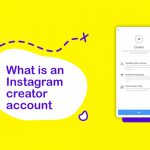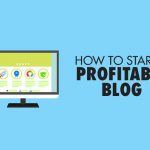What Is Social Media Reach? In a perfect world, everyone you wanted to reach with your online content would see your posts or ads. In reality, not all of your followers will see every post you make, and you will likely only reach a fraction of your total potential audience size. Reach is a measure of this concept and very important in digital marketing.
Reach
When it comes to social media reach, Facebook is always the first platform to come up in conversation. Interestingly enough, it’s also the first platform to come up when talking about the decline of organic reach on social media.
What about reach on platforms like Twitter and LinkedIn?
Everywhere you look, organic reach is plummeting. Today we’re going to look at why and what you can do to change it.
For small businesses, it’s not always reasonable to pay for marketing on social media. For others, it’s about balancing the paid reach with organic.
Also Read:
Improve Your SEO Ranking + Step-by-Step Guide
What is Reach?
In order to attract followers and customers, your business needs to gain a reasonable reach. When we talk about reach, we are referring to the potential audience visibility of your posts through your social media marketing efforts.
How many people are seeing your content? There are some steps that you can take to maximize your reach, which will ultimately boost your online presence, help your audience find the content they want, and attract potential leads.
Reach is the number of unique people who are exposed to an advertisement or social media post. In simpler terms, it’s the number of people that saw your content.
Reach is often confused with impressions, which is the total number of times an advertisement or social media has been viewed, including repeat views by the same people.
Why You Should Care About this social media metric
Reach is used as a measure of brand awareness or how popular your content is. It’s a better brand awareness measure than followers or impressions, as it counts the actual number of people you were able to impact.
Reach can be used both in the planning and reporting phase of a marketing campaign.
Before planning any marketing campaign, you need to know the potential size of your audience. This allows you to estimate the possible impact of your campaign.
Calculating reach also allows you to assess a campaign while it’s happening or assess its performance after the fact. You may need to pivot your content strategy to a different platform or format in order to achieve your desired audience size.

Also Read:
7 Marketing Strategies to Improve Your Business Growth
Benefits of Calculating
Tracking reach allows you to assess the viewership of your:
- Hashtags
- Posts
- Ads
- Events
- Social media profiles
What’s the Difference Between Reach vs. Impressions?
Reach is the total number of people who see your content. Impressions are the number of times your content is displayed, no matter if it was clicked or not.
Think of reach as the number of unique people who see your content. In a perfect world, every one of your followers would see every piece of content you posted.
Unfortunately, that’s not how things work on social, and not all of your followers will see every single post you publish. For instance, Groupon has 17 million followers, but their organic content doesn’t come close to getting that number of engagements because only a fraction of their audience sees it.
However, an impression means that content was delivered to someone’s feed. A viewer doesn’t have to engage with the post in order for it to count as an impression. Also, one person could have multiple impressions for a single piece of content.
Also Read:
What Is Social Media Engagement ? Why is it so Important ?
5 ways to increase your organic reach on social media
1. Focus your efforts on the right places
Most businesses will assume that they need to have a presence on everything from Facebook to Pinterest, but that’s not necessarily the case.
Your audience may not have a presence on every social media platform, so why waste energy? Choosing best social media platforms to focus on is easier than you think.
2. Learn how to maximize your marketing
Every social media network has something that stands out about their functionality. Make sure you play up the strengths of the social media networks that you choose to invest in. Posting the exact same message across multiple platforms might not be the best practice depending on how each site optimizes their posts.
For example: though you CAN use hashtags on Facebook, it does little to impact your reach on that specific platform. Using hashtags on Twitter or Instagram would be much more effective. Similarly, Instagram makes it all but impossible to share links on their platform. Learning what each platform’s strengths and weaknesses are will help you to take full advantage of their tools and get the most out of your social media marketing strategy.
3. Optimize your social media profiles
Earlier I drew a connection between social media algorithms and the ones used by search engines like Google. When we create content for those engines, we optimize it with all kinds of on-page SEO tactics.
Well, turns out social media is the same way.
Every aspect of your social media profile can be tweaked for better visibility and optimization. If you want to be a social media Rockstar, you need to know the ins and outs of these elements.
Many of the tactics you know and love work here, too:
- An easy to remember username
- A recognizable photo/brand logo
- Keyword-rich descriptions (that still sound natural)
- A trackable backlink to your website
When posting, use these same factors to decide which images you use, what keywords you include, and how you phrase your call-to-action. This applies to any and all social media platforms.
4. Target the right audience for optimized reach
A lot of social media platforms are changing their algorithms to mirror Google’s. There is now an element of SEO rankings that is being incorporated into social media – only the most relevant content will appear in user’s newsfeeds.
That’s why it’s important to make sure that you are targeting the right target audience. You don’t want to waste your time and resources sharing content with the people outside your target personas. A lot of this will be solved once you’ve identified which platforms to reach your users on, but each one has different tools and nuances that make your job easier and more effective.
5. Post the right types of content
An interesting study done revealed that certain types of content (Instagram content, for example) can give you a huge boost in organic reach.
The results of their study showed that video content had the highest organic reach on Facebook by a margin of almost 3%, which is huge given that average organic reach has dropped to 1% or less.
Check out this comparison from their study:
Of course, you shouldn’t assume that videos will work for you as well, but it does tell you that you probably want to experiment with it.
Not only should you vary up the mix of images, status updates, links, and videos that you post, but also use tools like Facebook Insights to track your posts and see which types are performing best.
Also Read:
Easy Steps to Use Instagram Insights for Improving Your Marketing
Final thoughts
The secret to organic social media reach is the same as the secret to ranking well on search engines. It’s all about optimization, user experience, and high-quality content. If you start thinking about your social media efforts in the same way you think about your SEO work, you’ll see the pieces fall into place.





























